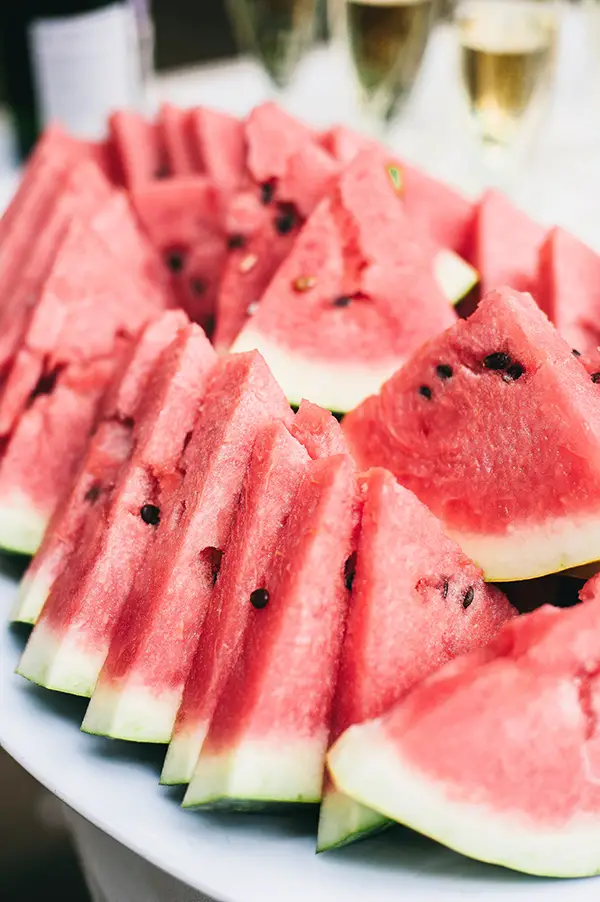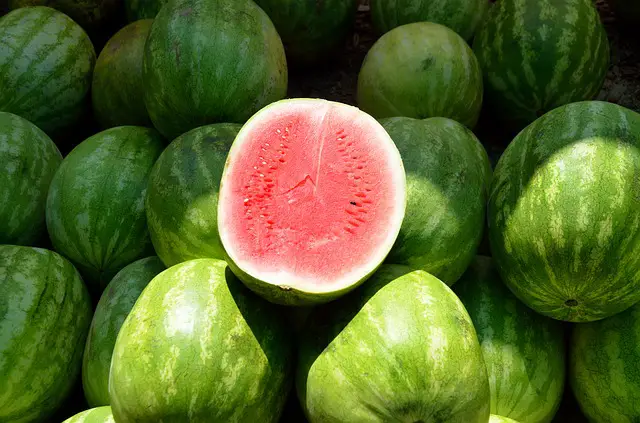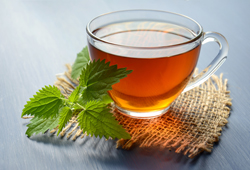What’s the Difference between Melon and Watermelon?
Ultimate summer fruits by excellence, melons and watermelons, even if very different, have many common points.
That’s probably why you ask that question. Here is the quick answer I can give you right away:
Melon and watermelon are two fruits of the same family, the Cucurbitaceae, but are not alike.
The watermelon is a giant fruit, that can have a diameter of 2 ft and weigh between 11 and 44 pounds.
The melon has a more usual size, 4.4 pounds and a diameter of about 4 inches.
That’s it for generalities, that you probably already know
Let’s move to the other differences between these two fruits
The melon
Definition
Any of various typically sweet gourds (such as a muskmelon or watermelon) usually eaten raw as fruits
Merriam-Webster
As often, this definition is a bit short to help us, so I’ll add more information
The melon is a creeping annual plant (Cucurbitaceae) grown for its fruits, requiring a lot of heat and light, of which there are many varieties.
Melon also designate the fruit of this plant, round or oval, with green to yellow or light-brown skin and with sweet and fragrant flesh, orange to greenish.
Aspect
I already said the essential in introduction and in the last paragraph, but you can find here a summary of the essential information:
- Skin: The melon is a fruit with a green skin, rarely smooth. When ripe, its color become closer to the yellow
- Fruit: The fruit pulp is yellow to orange. There are many pips in the middle, like for many other fruits and vegetables
- Size: Its size depends on the variety and shapes, but you’ll generally find melon with a 10 cm diameter approximately (3.9 inches)
- Weight: It can also vary (between 500g and 3 kg), but generally a melon weighs between 1.5 and 2 kg (3.3 to 4.4 lbs)
The pictures that you’ll find further in this post will help you to know what the melon looks like exactly
Varieties
Like many other fruits and vegetables, the melon exists in several varieties, depending on its aspect and origins
Here is a few examples:
- The European Cantaloupe: It’s the most consumed variety in the world, that’s generally the one you’ll find at your supermarket or favorite store
- The Honeydew melon: This melon comes from Maghreb (North Africa) and has several particularities. It’s one of the few to have a smooth skin, and it also has a specific fruit, with green flesh
- The Korean melon: It’s a yellow melon with white lines and that is also white inside.
- And finally the Tiger melon: Coming from Turkey, it has multi-colors stripes : orange, black and yellow
There are hundreds of them, so I will not introduce them all 🙂
But remember that they exist, so even if you always see the same at the supermarket, doesn’t mean that melon are all the same
Cultures
The melon plant is creeping and takes more and more space quickly
It can measure several meters for only one plant. It creates flowers, with the melon as the fruit
While growing and taking weight, the melon will fall on the ground, and continue to grow here, on the ground
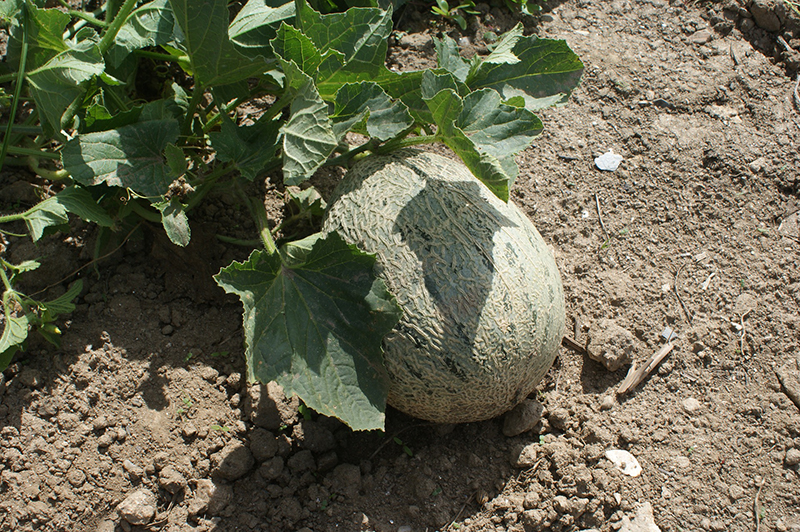
Plants and fruits needs a lot of water
But leaves don’t like direct water, so it’s necessary to water them at the base of the plant
The best season to harvest melons is the summer (from June to September)
Pictures
Here are a few pictures to illustrate what I wrote until now:
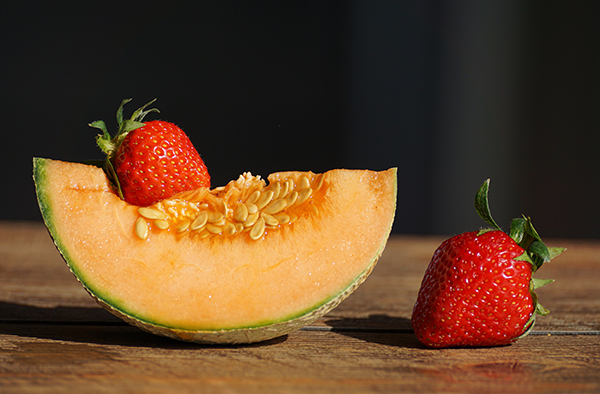
Melon slice 
Honeydew melon 
Nutritional values
Melon is a fruit composed of 90% water
It brings a little sugar (6%) and proteins (lower than 1%)
It also contents fibers, like many fruits, is low in fat and calories (33 kcal for 100g)
The melon is rich in vitamins A and C and is therefore excellent for health
Cooking
The melon is usually prepared very simply, with fresh pieces of different sizes and shapes, which you can eat at the beginning of the meal.
You’ll often find it with raw ham, or in salad with mozzarella or feta, a typical summer meal 🙂
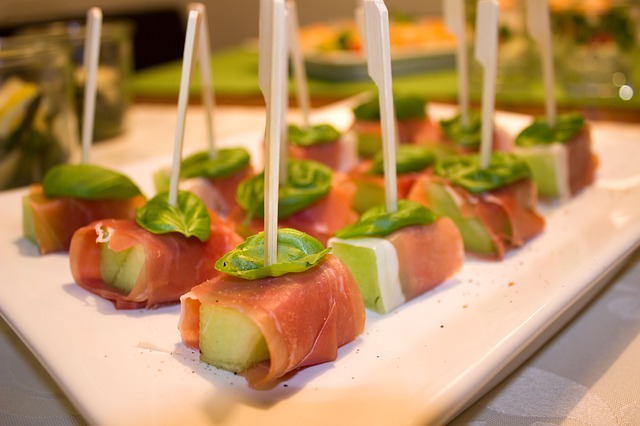
If you want to try something new with melons, you can prepare different recipes such as sorbet, or with meat, or even in cold soup.
You’ll find more details on your favorites cooking websites
The watermelon
Let’s now discover the particularities of the watermelon
Definition
A large oblong or roundish fruit with a hard green or white rind often striped or variegated, a sweet watery pink, yellowish, or red pulp, and usually many seeds
Merriam-Webster
This one is more useful, and is complete enough to let us go into more detail just after
Aspect
Here is the list of physic characteristics of the watermelon fruit:
- Skin: the skin of the watermelon is streaked with several shades of green (see the illustrations later) and rather thick for a fruit, but not so much for a fruit of this size ????
- Fruit: the flesh of the fruit is pink, and there are also some seeds
- Size: The watermelon is a giant fruit, its diameter is generally between 1 and 2 ft (ca. 30 to 60 cm)
- Weight: A watermelon you can find at the store, generally weighs between 6.5 and 9 lbs (3 to 4 kg). Some fruits can weigh up to 44 lbs!
I’ll show you pictures later, this will be clearer for you
Varieties
You can also find different varieties of watermelon
I’ll not give you too many details, here are just three interesting ones:
- The “Fashion”: created by humans thanks to a cross between several species, this watermelon has the advantage to not have any pips inside 🙂
- The “Gigerine”: The Gigerine is another variety, perfect to make jam, but you can’t eat it raw
- The “Orangeglo”: And this is another watermelon variety, original because like its name suggests, its flesh is orange
Pictures
Here are pictures to illustrate what I already told you about the watermelon:
Nutritional values
Melon and watermelon share many nutritional values:
- Low in calories
- Low in sugar
- Rich in vitamins (mainly A, B and C)
Cooking
Watermelon is a very refreshing fruit that we eat in summer, as a starter or as a dessert
It is consumed mainly raw, in thin slices seeded, but you can also eat it in fruit salad or sorbet

Like I wrote previously, some watermelon also permit making jam
Differences between melon and watermelon
Sizes
The main difference between these two fruits is their diameter and size
While you can handle a melon in one hand, the watermelon is probably the biggest fruit of the store, with more than 8 inches and 6.6 lbs (20 cm and 3 kg minimum)
Colors and aspects
The other main difference is their visual aspect, more than their sizes
The watermelon tends to dark green, has a smooth skin and its fruit a bright pink / red color
The melon has an orange flesh and a skin with asperities that tends more between light green and white
Conclusion
In any case, I hope that this article was useful for you and could answer to many of your questions
After the writing of this post, I realize that this two fruits have many common points, in term of taste, composition, culture and cooking habits
Yes, from the visual point of view, there is nothing similar, but without that, there are not so many differences


